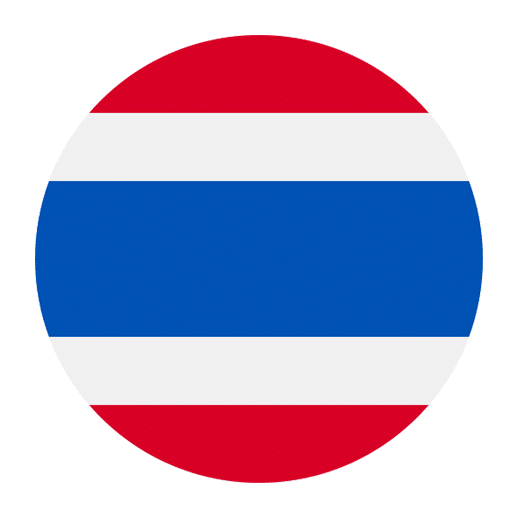Thailand is renowned for its vibrant and diverse culinary scene. From bustling street food markets to high-end restaurants, Thai cuisine is a feast for the senses. The dishes are often a harmonious blend of different flavors: sweet, sour, salty, and spicy. If you’re traveling to Thailand or simply exploring Thai cuisine at your local restaurant, knowing a few key words can enhance your dining experience. In this article, we’ll delve into the essential Thai words for local and traditional dishes that every food enthusiast should know.
Understanding the Basics
Before we dive into specific dishes, it’s helpful to understand some basic Thai words related to food and dining. Here are a few key terms that will come in handy:
– อาหาร (ah-hăan) – Food
– ร้านอาหาร (ráan ah-hăan) – Restaurant
– เมนู (may-noo) – Menu
– ข้าว (kâo) – Rice
– น้ำ (náam) – Water
Knowing these basic words will help you navigate a Thai menu and understand what you’re ordering. Now, let’s move on to specific dishes that you must try.
Popular Thai Dishes
Pad Thai (ผัดไทย)
One of the most famous Thai dishes internationally, Pad Thai is a stir-fried noodle dish that combines a range of textures and flavors. The word “ผัด” (pàt) means “stir-fry,” and “ไทย” (thai) means “Thai,” so the dish translates to “Thai stir-fry.”
Ingredients often include:
– Rice noodles
– Eggs
– Tofu or shrimp
– Bean sprouts
– Crushed peanuts
– Lime wedges
The dish is typically seasoned with tamarind paste, fish sauce, and a touch of sugar, giving it a perfect balance of sweet, salty, and tangy flavors.
Tom Yum Goong (ต้มยำกุ้ง)
This iconic soup is known for its hot and sour flavors, and it’s a must-try for anyone visiting Thailand. The word “ต้ม” (dtôm) means “boil” and “ยำ” (yam) means “mixed,” while “กุ้ง” (gûng) means “shrimp.” Therefore, Tom Yum Goong translates to “boiled mixed shrimp.”
Key ingredients include:
– Lemongrass
– Kaffir lime leaves
– Galangal
– Chili peppers
– Mushrooms
– Shrimp
The soup is often finished with a splash of coconut milk or evaporated milk to add a creamy texture, although this varies by region.
Green Curry (แกงเขียวหวาน)
Green curry, or แกงเขียวหวาน (gaeng khiao wăan), is a staple in Thai cuisine. The word “แกง” (gaeng) means “curry,” “เขียว” (khiao) means “green,” and “หวาน” (wăan) means “sweet,” referring to the slightly sweet flavor of the dish.
Ingredients include:
– Green curry paste (made from green chilies, garlic, and other spices)
– Coconut milk
– Chicken or tofu
– Eggplant
– Thai basil
This dish is typically served with jasmine rice and is a delicious blend of spicy, sweet, and aromatic flavors.
Som Tum (ส้มตำ)
Som Tum, or Thai green papaya salad, is a refreshing and spicy salad that originated in the northeastern part of Thailand. The word “ส้ม” (sôm) means “sour” and “ตำ” (dtam) means “pound,” referring to the method of preparation where ingredients are pounded together in a mortar and pestle.
Key ingredients:
– Shredded green papaya
– Cherry tomatoes
– Green beans
– Peanuts
– Dried shrimp
– Lime juice
– Fish sauce
– Chili peppers
Som Tum is often served as a side dish and pairs well with grilled meats and sticky rice.
Regional Specialties
Thailand’s diverse geography and cultural influences mean that different regions have their own unique dishes. Here are some regional specialties that you should try:
Kanom Jeen Nam Ngiao (ขนมจีนน้ำเงี้ยว)
This Northern Thai dish is a flavorful noodle soup that’s lesser-known internationally but is a favorite among locals. The word “ขนมจีน” (kanom jeen) refers to fermented rice noodles, and “น้ำเงี้ยว” (náam ngîao) is the name of the specific broth used in this dish.
Ingredients include:
– Fermented rice noodles
– Pork or chicken
– Tomato-based broth
– Dried chilies
– Pickled mustard greens
– Fresh herbs
This dish is often garnished with crispy garlic and lime wedges, giving it a complex and satisfying flavor profile.
Massaman Curry (แกงมัสมั่น)
Massaman curry is a rich and mildly spiced curry that has its roots in Southern Thailand. The word “มัสมั่น” (mássamàn) is believed to be derived from “Muslim,” as this dish has Persian influences.
Key ingredients include:
– Massaman curry paste (made with spices like cinnamon, cardamom, and cloves)
– Coconut milk
– Beef or chicken
– Potatoes
– Peanuts
– Tamarind paste
This curry is usually served with rice and is known for its hearty and aromatic flavors.
Khao Soi (ข้าวซอย)
Khao Soi is a Northern Thai coconut curry noodle soup that is both flavorful and comforting. The word “ข้าว” (kâo) means “rice,” and “ซอย” (soi) means “cut,” referring to the cut noodles used in the dish.
Ingredients include:
– Egg noodles
– Coconut milk-based curry
– Chicken or beef
– Pickled mustard greens
– Shallots
– Lime
The dish is garnished with crispy fried egg noodles on top, adding a delightful crunch to each bite.
Street Food Delights
Thailand’s street food culture is legendary, offering a wide array of delicious and affordable dishes. Here are some street food favorites that you must try:
Satay (สะเต๊ะ)
Satay refers to skewered and grilled meat, often served with a peanut dipping sauce. The word “สะเต๊ะ” (sà-té) itself doesn’t have a specific meaning in Thai but is borrowed from the Malay word for skewered meat.
Commonly used meats include:
– Chicken (ไก่ – gài)
– Pork (หมู – mŏo)
– Beef (เนื้อ – núea)
Satay is often served with a side of cucumber salad, making it a perfect snack or appetizer.
Khao Pad (ข้าวผัด)
Khao Pad, or fried rice, is a simple yet satisfying dish that can be found at almost every street food stall. The word “ข้าว” (kâo) means “rice,” and “ผัด” (pàt) means “stir-fry.”
Ingredients often include:
– Jasmine rice
– Eggs
– Vegetables (carrots, peas, onions)
– Meat (chicken, pork, or shrimp)
– Soy sauce or fish sauce
This dish is usually garnished with fresh cucumber slices and lime wedges.
Mango Sticky Rice (ข้าวเหนียวมะม่วง)
A popular dessert, Mango Sticky Rice is a sweet and satisfying way to end your meal. The word “ข้าวเหนียว” (kâo nĭao) means “sticky rice,” and “มะม่วง” (má-mûang) means “mango.”
Ingredients include:
– Glutinous rice
– Coconut milk
– Sugar
– Ripe mangoes
The dish is often garnished with toasted sesame seeds or mung beans, adding a bit of crunch to the creamy texture.
Vegetarian and Vegan Options
Thai cuisine is incredibly adaptable, and many dishes can be made vegetarian or vegan. Here are some words and phrases to help you communicate your dietary preference

